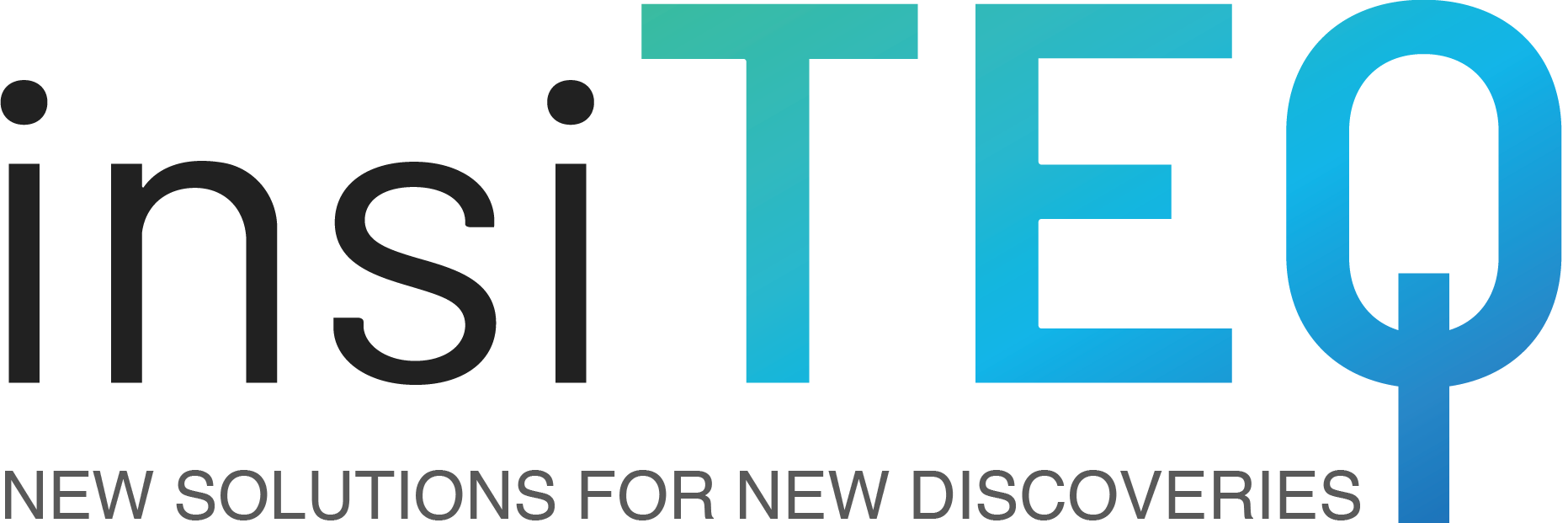Markets are constantly changing, and it’s important to have a sound research plan in place if you want your company or business’ product stand out from the competition. This article will help you understand the 11 steps that need to be followed to execute a sound market research study. This formal process can also be called “Research Design”.
Table of Contents
11 Steps of Research Design
Comprehensive Guide
1. Define the research problem or opportunity
The first step in any research process is to clearly define the research problem or opportunity. This can be done through a number of different methods, including interviews, focus groups, and surveys.
While it may seem like a simple task, defining the research problem or opportunity is crucial to the success of any research project. Without a clear definition, it can be difficult to determine which research methods to use and how to interpret the results.
If you’re not sure where to start, there are a number of resources available to help you define the research problem or opportunity. The following articles offer some helpful tips:
- How to Define a Research Problem or Opportunity
- How to Identify a Research Problem or Opportunity
- How to Write a Problem Statement for Your research Project
- How to Develop a research Questionnaire
Once you’ve taken some time to define the research problem or opportunity, you can move on to the next step in the research process.
2. Conduct a literature review

Once the research problem has been defined, the next step is to conduct a literature review. This helps to provide a foundation for the study and determine what has already been studied in this area.
A literature review is an important step in conducting research. It helps to define the problem and determine what has already been studied in this area. This process should be unbiased and objective. It should identify gaps in the literature and make suggestions for further research.
The process of reviewing literature can be a daunting task, but it is important to remember that it does not need to be exhaustive. The goal is to identify relevant literature and synthesize the information into a cohesive overview.
Tips to conduct a literature review
The following tips will help you conduct a literature review:
- Define your research question before you begin your search. This will help you focus your search and save time.
- Use keyword searching to find relevant articles. Try different combinations of keywords until you find what you are looking for.
- Use databases such as Google Scholar, PubMed, and Web of Science. These databases will help you find peer-reviewed articles.
- Read the abstracts of the articles to determine if they are relevant to your topic. If the abstract is not available, read the full text of the article.
- Organize your literature review using a table or concept map. This will help you see the relationships between different concepts and ideas.
- Write a summary of what you have found in each article. This will help you remember the main points of each article and synthesize the information into a cohesive overview.
Conducting a literature review can seem to be a tedious task, though it is an important step in conducting research. By following these tips, you can make the literature review process easier and more efficient. Once you have completed your literature review, you will be one step closer to writing your research paper!
3. Develop research objectives (aka Hypothesis)
After conducting the literature review, it is important to develop clear research objectives. This will help guide the rest of the research process and ensure that all steps are aligned with the goals of the study.
There are a few different ways to go about developing research objectives. One approach is to start with the research question, and then develop hypotheses that can be tested through data collection and analysis. Another approach is to think about the overall goal of the research project and what needs to be accomplished in order to achieve that goal.
Whichever approach you choose, it is important to be clear and concise when writing your research objectives. They should be specific enough that they can be measured, but not so specific that they limit the scope of your study. Once you have developed your research objectives, you can use them to guide the rest of your research process.
If you’re stuck on where to start, try brainstorming a list of potential objectives and then narrowing down the list to the most important or relevant ones. You can also consult with your supervisor or other experts in your field to get their input on what objectives would be most appropriate for your research project.
Once you have your research objectives, you can begin thinking about how to operationalize them. This means determining how you will measure the variables that are mentioned in your objectives. For example, if one of your objectives is to examine the relationship between two variables, you will need to decide which type of data collection and analysis methods will be best suited for measuring that relationship.
Operationalizing your research objectives is an important step in ensuring that your study is well-designed and that all of its components are aligned with its overall goals. By taking the time to develop clear and concise research objectives, you can set your study up for success.
4. Formulate your research design
The fourth step is to identify the research design. This will determine the overall approach of the study and include information such as the type of study, the population, and the sampling method.
When formulating your research design, it is important to consider the type of study, the population, and the sampling method. The type of study will determine the overall approach of the research, while the population and sampling method will help to identify the target audience and how best to collect data. By taking all of these factors into consideration, you can develop a well-rounded research design that will be able to address your research question effectively.
There are a variety of different research designs that you can choose from, so it is important to select one that is best suited for your particular study. For example, if you are interested in investigating a specific phenomenon, you may want to choose a case study design. On the other hand, if you are interested in comparing two groups of people, you may want to choose a comparative research design. Once you have selected a research design, you will need to determine the population and sampling method. The population is the group of individuals that you are interested in studying, while the sampling method is the process by which you will select individuals from the population to participate in your study.
By formulating your research design before beginning your study, you can ensure that your data will be collected and analyzed effectively. This will ultimately help you to answer your research question and draw conclusions about your topic of interest. So, take some time to consider all of these factors before moving on to the next step in your research journey!
5. Select the research method
Once the research design has been selected, the next step is to select the research method. This will determine how data will be collected and can include methods such as interviews, focus groups, and surveys.
The research method should be selected based on the research design and the research question. As mentioned, some of the most common research methods are interviews, focus groups, and surveys. Each research method has its own advantages and disadvantages. For example, interviews are good for getting in-depth information from a small number of people, but they can be time-consuming and expensive. Focus groups are good for exploring ideas with a group of people, but they can be difficult to control. Surveys are good for collecting large amounts of data quickly, but they can be subject to bias.
Once the research method has been selected, the next step is to develop the research instruments. These will be used to collect data from participants in the study. The most common research instruments are questionnaires and interview protocols.
Questionnaires are a type of research instrument that is used to collect data from participants in a study. They can be used to collect both quantitative and qualitative data. Questionnaires can be administered in person, by mail, or online.
Interview protocols are another type of research instrument that is used to collect data from participants in a study. They are typically used to collect qualitative data. Interview protocols can be administered in person or by telephone.
6. Collect data
After selecting the research method, it is time to start collecting data. This can be done through a number of different methods, depending on the type of study and research objectives.
There are a few things to keep in mind when collecting data. First, you need to decide what type of data you need. Second, you need to choose the right methods for Collecting that data. And third, you need to make sure that the data you collect is high quality. let’s take a closer look at each of these points.
When deciding what type of data you need, it is important to consider what type of research questions you are trying to answer. If your research questions are qualitative in nature, then you will likely want to collect qualitative data. Qualitative data includes things like interviews, focus groups, and observations. If your research questions are quantitative in nature, then you will want to Collect quantitative data. Quantitative data includes things like surveys, experiments, and demographic information.
Once you have decided what type of data you need, you need to choose the right Collecting methods. There are many different Collecting methods, and the right method will depend on the type of data you are Collecting and your research goals. Some common Collecting methods include interviews, focus groups, online surveys, experiments, and observations.
When Collecting data, it is important to make sure that the data is high quality. This means that the data should be accurate, reliable, and valid. Data quality is important because it affects the validity of your research findings. If your data is not high quality, then your research findings might not be accurate. Collecting high quality data takes time and effort, but it is worth it to make sure that your research findings are accurate.
7. Clean and code data

After data has been collected, it must be cleaned and coded. This process helps to ensure that the data is ready for analysis. There are a few things to keep in mind when collecting data.
- First, make sure that the data is accurate and reliable. This means choosing a method that will produce valid results.
- Second, the data should be representative of the population being studied.
- Third, collect enough data to answer the research question(s).
There are a few different ways to collect data. Some common methods include surveys, interviews, focus groups, and observations. Collecting data can be a time-consuming process, so it is important to plan ahead and allow enough time to gather all the necessary information. Once the data has been collected, it is time to analyze it. This will be covered in the next section.
8. Analyze data
Once the data has been cleaned and coded, it is time to begin analyzing it. This can be done through a number of different methods, such as descriptive statistics, t-tests, and regression analysis.
The first step in analysis is to decide what type of analysis is best suited for the research question. Descriptive statistics can be used to summarize the data and give an overall picture of what is going on. T-tests can be used to compare means between two groups, and regression analysis can be used to examine the relationships between variables.
You can use tools like IMB SPSS Software to perform all sorts of statical tests and that way “bridge the gap between data science and data understanding”. We’ve found the bellow “SPSS Tutorial for data analysis | SPSS for Beginners” tutorial video quite useful and comprehensive.
Once the appropriate analyses have been selected, they need to be conducted. This involves running the analyses and interpreting the results. Results should be reported in a clear and concise manner, with enough detail that someone else could replicate the analyses if they wanted to.
After the data has been analyzed, it is time to write up the results. This usually takes the form of a research paper or report. The results should be presented in a way that is easy to understand, and the implications of the findings should be discussed.
This is just a brief overview of data analysis; there are many resources available that can provide more detailed information. The important thing is to get started and to keep learning as you go. With practice, analyzing data will become easier and more enjoyable.
9. Interpret data and test hypotheses
After the data has been analyzed, it is important to interpret it. This includes understanding the results of the study and what they mean for the research problem or opportunity.
When interpreting data, it is important to consider the following:
- The results of the study and what they mean for the research problem or opportunity
- The reliability and validity of the data
- The limitations of the study
- The implications of the findings
Once the data has been interpreted, it is then time to test hypotheses. This involves using statistical techniques to test whether there is a significant relationship between two or more variables.
Testing hypotheses is an important part of any scientific research as it allows researchers to determine whether their results are statistically significant. If a hypothesis is found to be statistically significant, it means that there is a real relationship between the variables being tested. If a hypothesis is not statistically significant, it means that there is no real relationship between the variables being tested.
When testing hypotheses, it is important to consider the following:
- The null hypothesis
- The alternative hypothesis
- The level of significance
- The statistical test used
Once the hypotheses have been tested, it is then time to draw conclusions. This involves Interpret data and test hypotheses reviewing the findings of the study and determining what they mean for the research problem or opportunity. When drawing conclusions, it is important to consider the following:
- The results of the study and what they mean for the research problem or opportunity
- The limitations of the study
- The implications of the findings.
Interpret data and test hypotheses are two important steps in scientific research process. By understanding and applying these steps, researchers can ensure that their findings are accurate and reliable.
10. Write the report
After analyzing and interpreting the data, it is time to write the report. This should include a detailed description of the research process, findings, and conclusions of the study.
The research report should be written in a clear, concise, and easy-to-understand manner. It should be free of jargon and technical language, and should be accessible to a wide audience. The report should also be well-organized and well- structured.
When writing the research report, it is important to keep in mind the purpose of the research. The research report should answer the research question(s), and should address the objectives of the study. The findings of the research should be presented in a logical and coherent manner.
The conclusion of the research report should summarize the findings of the study, and should discuss their implications. The recommendations of the study should also be included in the conclusion section.
11. Present the findings

The final step is to present the findings of the study. This can be done through a number of different methods, such as presentations, posters, and reports.
The findings of the research should be presented in a way that is clear and concise. The presentation should be designed to engage the audience and encourage them to ask questions. The findings should be tailored to the specific audience, taking into account their background knowledge and understanding.
One method of presenting research findings is through a poster. Posters are a great way to summarise complex information and allow people to take away key points. They can also be used as a starting point for discussions. Another option is to give a presentation, which can be done either in person or online. Presentations offer the opportunity to go into more detail than a poster, and they can also be recorded so that they can be shared with people who were not able to attend.
Whatever method is used, it is important to remember that the research findings should be the focus of the presentation. The aim is to communicate the findings clearly and effectively, not to simply show off the work that has been done. With this in mind, it is often best to keep things simple and avoid using jargon or complex terminology.
Things to consider when presenting research findings
- Keep the audience in mind
- Present findings in a clear and concise manner
- Engage the audience and encourage questions
- Use simple language and avoid jargon whenever possible. Try explaining concepts in everyday terms.
- Focus on the research findings themselves, not on other aspects of the project.
Remember that the goal is to communicate the findings effectively.
There are a number of different ways to present research findings. Some common methods include:
- Posters
- Presentations (in person or online)
- Reports
Choose the method that best suits the audience and the message you want to communicate. And don’t forget – keep it simple!
Try explaining concepts in everyday terms. This will make it easier for your audience to understand your research findings.
Another important tip is to focus on the research findings themselves, not on other aspects of the project. The goal is to communicate the findings effectively, so avoid getting sidetracked by other details.
When presenting research findings, it is also important to use simple language and avoid jargon whenever possible. Try explaining concepts in everyday terms. This will make it easier for your audience to understand your research findings.
Remember that the goal is to communicate the findings effectively. With this in mind, it is often best to keep things simple and avoid using jargon or complex terminology.
One final tip: focus on the research findings themselves, not on other aspects of the project. The aim is to communicate the findings clearly and effectively, not to simply show off the work that has been done.
Keep these tips in mind when presenting research findings, and you’ll be sure to engage and inform your audience.
Good luck!
Read more

Exploring How Market Research Companies Are Embracing Digital Technologies
Market research companies have long relied on traditional methods to get feedback from consumers, but with advances in technology, they are now using new and

The Complete Guide to Finding “Market Research Near Me”
Searching for the right market research company in your area can seem overwhelming, but it doesn’t have to be. With a few simple tips and

Unveiling Top Market Research Companies to Watch in 2023
The market research industry is undergoing major disruption. Top market research companies that leverage innovative technologies, such as AI and machine learning, will be at

